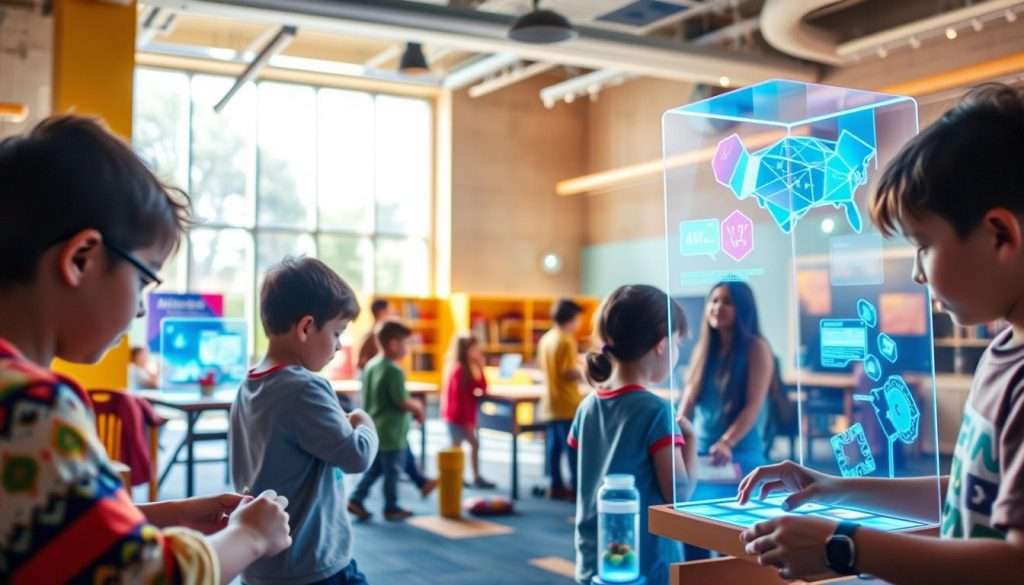Learning can be tough, but it doesn’t have to be boring. There’s a way to make it fun and effective. By participating actively, you can turn studying into something exciting.
Active engagement changes everything. When you’re involved, you remember more and understand better. It’s about thinking, talking, exploring, and making things – not just reading or listening.
By doing this, you’ll make learning better and gain valuable skills. Are you ready to start a more fun and effective learning journey?
Key Takeaways
- Active participation enhances learning experience
- Engaging in discussions improves retention
- Investigation and creation develop essential skills
- Transforming studying into an enjoyable task
- Developing a deeper understanding of the subject matter
The Power of Active Engagement in Learning
Active engagement makes learning more effective and fun. When you’re involved in learning, you stay motivated and remember more. Studies show that using active learning strategies improves learning in schools (Freeman et al., 2014; Theobald et al., 2020).
What Makes Learning “Active” vs. “Passive”
So, what’s the difference between active and passive learning? Active learning uses interactive learning like discussions and hands-on activities. Passive learning is just listening to lectures without doing much.
In a language class, active learning means talking with a partner. Passive learning is just listening to the teacher.
Let’s look at an example. Imagine learning a new language. Active learning means speaking, writing, and listening in a hands-on way. Passive learning is watching videos or reading texts without doing anything.
The Cognitive Science Behind Engagement
Engagement makes your brain work better. When you’re active, your brain connects new information. This is because hands-on learning and educational involvement use more brain areas. This helps you remember and understand better.
| Learning Approach | Characteristics | Benefits |
|---|---|---|
| Active Learning | Interactive, hands-on, discussions | Improved retention, deeper understanding |
| Passive Learning | Listening, reading, observing | Limited retention, superficial understanding |
Knowing how active engagement works helps you learn better. Whether you’re in school or always learning, using interactive learning techniques helps a lot.
Benefits That Transform Your Learning Experience
When you actively learn, you open up a world of benefits. By using student engagement strategies, your learning can greatly improve. This makes your educational journey more rewarding.
Learning through thinking, writing, talking, and solving problems offers many ways to understand. This approach helps you grasp the subject matter better.
Enhanced Information Retention and Recall
Active learning boosts information retention and recall. When you’re involved with the material, you’re more likely to remember important details. This is because you’re encoding information in different ways, making it easier to recall later.
For example, collaborative learning lets you discuss topics with others. This strengthens your understanding and helps you remember the material better.

Deeper Understanding of Complex Concepts
Dynamic learning experiences help you understand complex ideas better. By actively engaging, you can break down tough topics. Then, you can analyze and synthesize the information for a clear understanding.
Increased Motivation and Learning Enjoyment
Active learning also makes you more motivated and enjoy learning. When you’re involved, you feel a sense of achievement. This boosts your motivation to keep learning and exploring.
By using student engagement strategies and collaborative learning, learning becomes more fun and fulfilling.
Assessing and Transforming Your Learning Approach
Now that we’ve looked at the benefits of active learning, it’s time to change your approach. Experiential learning means getting hands-on and experiencing learning for yourself. Start by using methods like Think-Pair-Share, Write-Pair-Share, and 3-2-1 activities in your studies.
These methods help you work together, think deeply, and solve problems. Think about your current learning ways. Ask yourself: What works for me? What doesn’t? How can I make learning more fun and effective?
By using experiential learning and active engagement, you can improve your learning. We suggest you keep trying out and adjusting these methods to fit your needs. This way, learning can become more enjoyable and successful for you.

